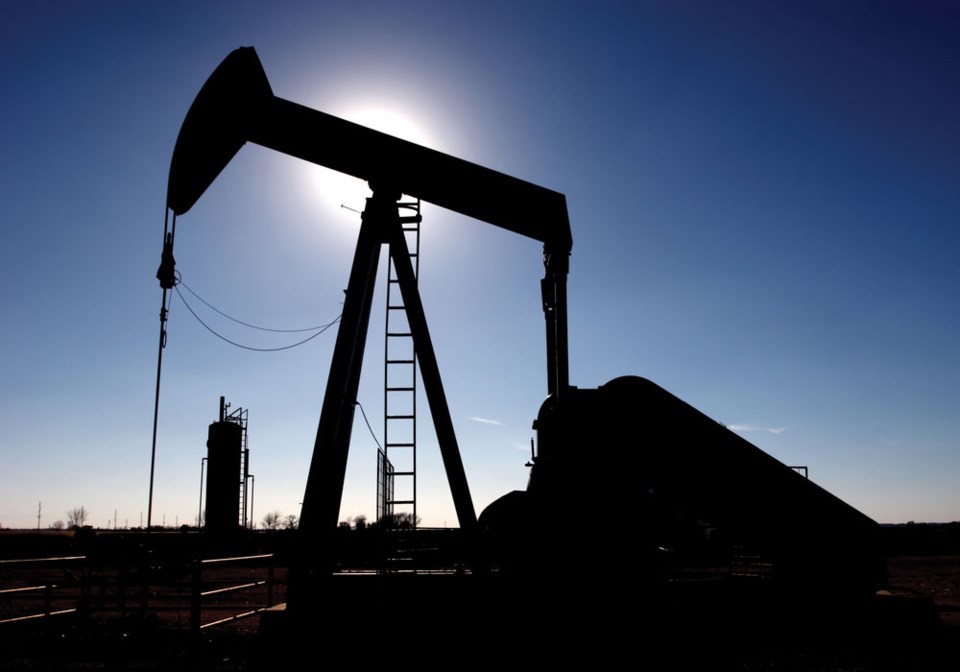Following several years of a booming oil industry, companies are preparing to survive a period of prolonged price lows.
The Petroleum Services Association of Canada (PSAC) released an update to their expected drilling activity numbers last week, and the forecast cuts the projected wells to be drilled by about 30 per cent.
PSAC’s original forecast was released in October, before any sustained dip in oil prices had occurred. An updated forecast in January projected a 24 per cent decrease in expected drilling activity. Mark Salkeld, PSAC president and CEO, said they thought the January forecast would be about as low as the drilling activity would go. Judging by this latest forecast, he said, they were wrong.
“We were caught off guard,” said Salkeld. “This is low.”
On a provincial basis, PSAC now estimates 2,976 wells to be drilled in Alberta, which is about half the 5,740 wells expected in the original forecast. In Saskatchewan, the expected well count is now 1,507 wells, only 44 per cent of the 3,365 wells in the original forecast.
Salkeld said the more significant drop in Saskatchewan isn’t necessarily indicative of an even less attractive drilling atmosphere than in Alberta.
“That’s how the numbers are playing out. In Saskatchewan, the producers … have been working hard to get railcar-loading capacity and they’ve got access to refineries in the northern United States and other areas. That’s a bit of a sustainable piece to it, but when it comes all in, we’re all in the same boat.”
Manitoba is forecasted to drill 270 wells, down by 160. British Columbia, on the other hand, is expected to have a marginal increase, from 555 wells to 560 wells. PSAC based its updated forecasts on average natural gas prices of $2.50/mcf (AECO), crude oil prices of US $53/barrel (WTI) and the Canadian dollar averaging $0.77 per US dollar.
Salkeld told the audience at the forecast presentation in Calgary last week, the last time he saw a drilling forecast predicting only 5,000 wells across the country was 1992.
“The number of holes being punched is right down there with the early 90s,” Salkeld told the Mercury during a phone interview, shortly after his presentation. Now, companies must try to survive long enough to be around until a better situation arises.
“It’s all stops pulled with regards to strategizing on how to survive. The weaker (companies) that were just getting established or their debt wasn’t managed right – I’m not sure and can’t say – those weaker ones are already closed, service providers and junior to mid-sized producers.
“The big guys, this is a blip in the radar because they’ve got 25-year plans, so they just ride it out.”
But he did hear what he called “positive” talk around the tables at last week’s forecast announcement.
“It sounds like, if it pans out to be true and nothing changes, there are companies that are just waiting for road bans to come off, and they’ve got contracts to move their equipment as soon as they can. It will be interesting to see if that pans out.”
Though they aren’t the only ones making predictions, PSAC takes forecasting seriously, and Salkeld called it a robust process. Still, a forecast is only a guess as to what will happen in the future.
The first 2015 forecast in October estimated about 10,000 wells, which at the time seemed reasonable.
“There were hints – well, there weren’t even really hints – just whispers of something, but nothing that anybody was taking seriously from our perspective, until we got into January. Then it was like, holy cow, something is happening here.”
Even at that time, they waited to get the final numbers from 2014 before completing the January forecast.
It’s not just the price of oil that may cause hesitancy in drilling activity. Oil supply has been outpacing demand and production isn’t expected to decrease at all. In some cases, production is increasing.
“In a lot of cases, producers, oilsands in particular, are reporting increased production. That’s the well optimization piece, and that’s part of the factor. Oilsands, they’ve scaled back on their drilling activity, and they’re focusing on well optimization and production optimization. At this point in time, rig activity has dropped off, but production activity is going up,” said Salkeld. “But that is going to come around, especially with the new types of wells we’re drilling. There’s lots of experimentation to improve the decline rates, but right now, when we drill these long horizontals and they produce like gangbusters for a year, then the decline rates kick in and it drops off, we just have to keep drilling more wells.”
Given more time, he said that will “balance out” and production rates will drop.
But there was some optimism in the room when Salkeld delivered the forecast. It wasn’t coming from the numbers, but instead from some of the industry stalwarts.
“A lot of our members have been around for 30 years. This isn’t our first downturn. They know how to weather the storm,” Salkeld said.
Things will turn around. The question is when.




